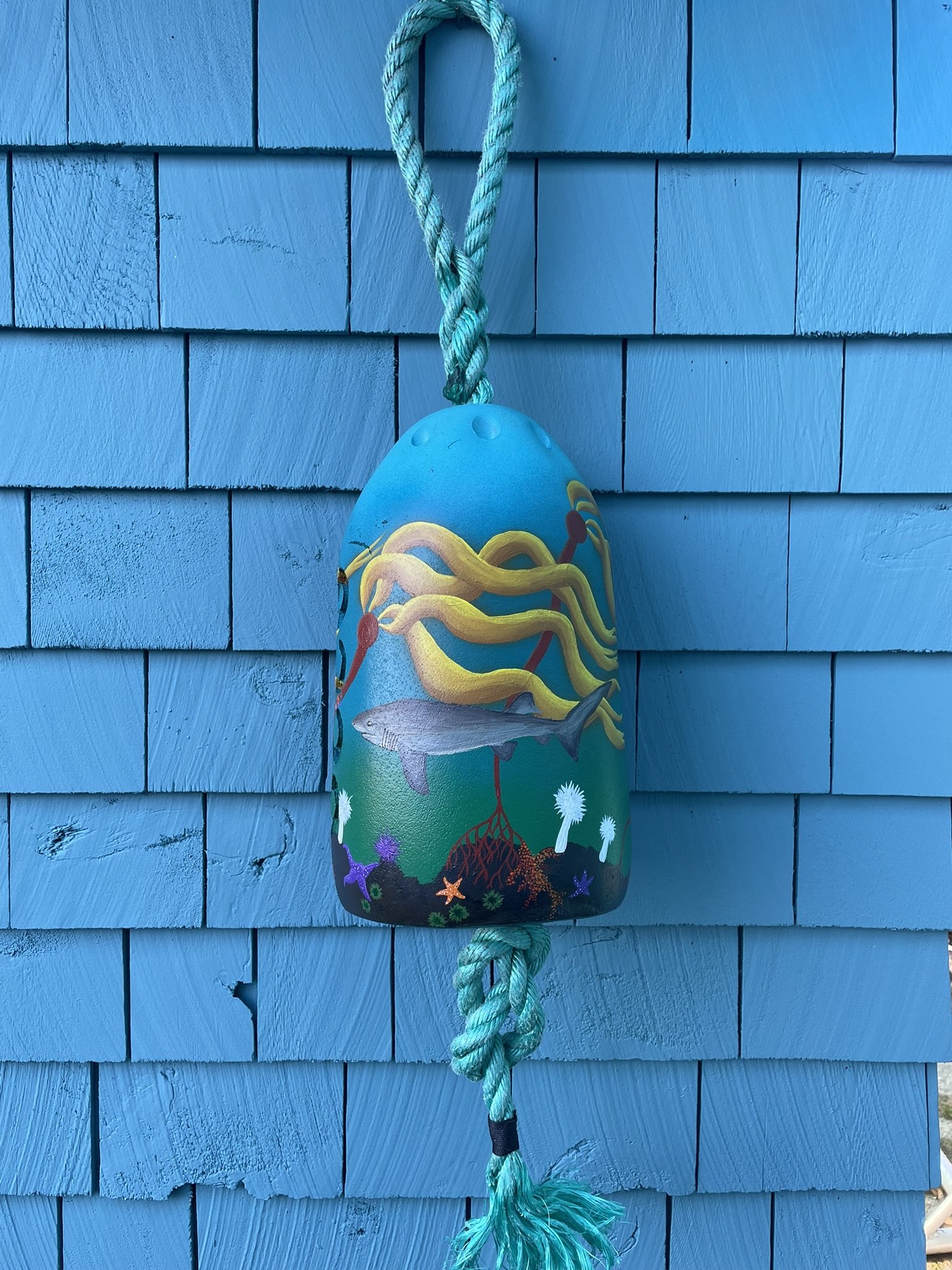
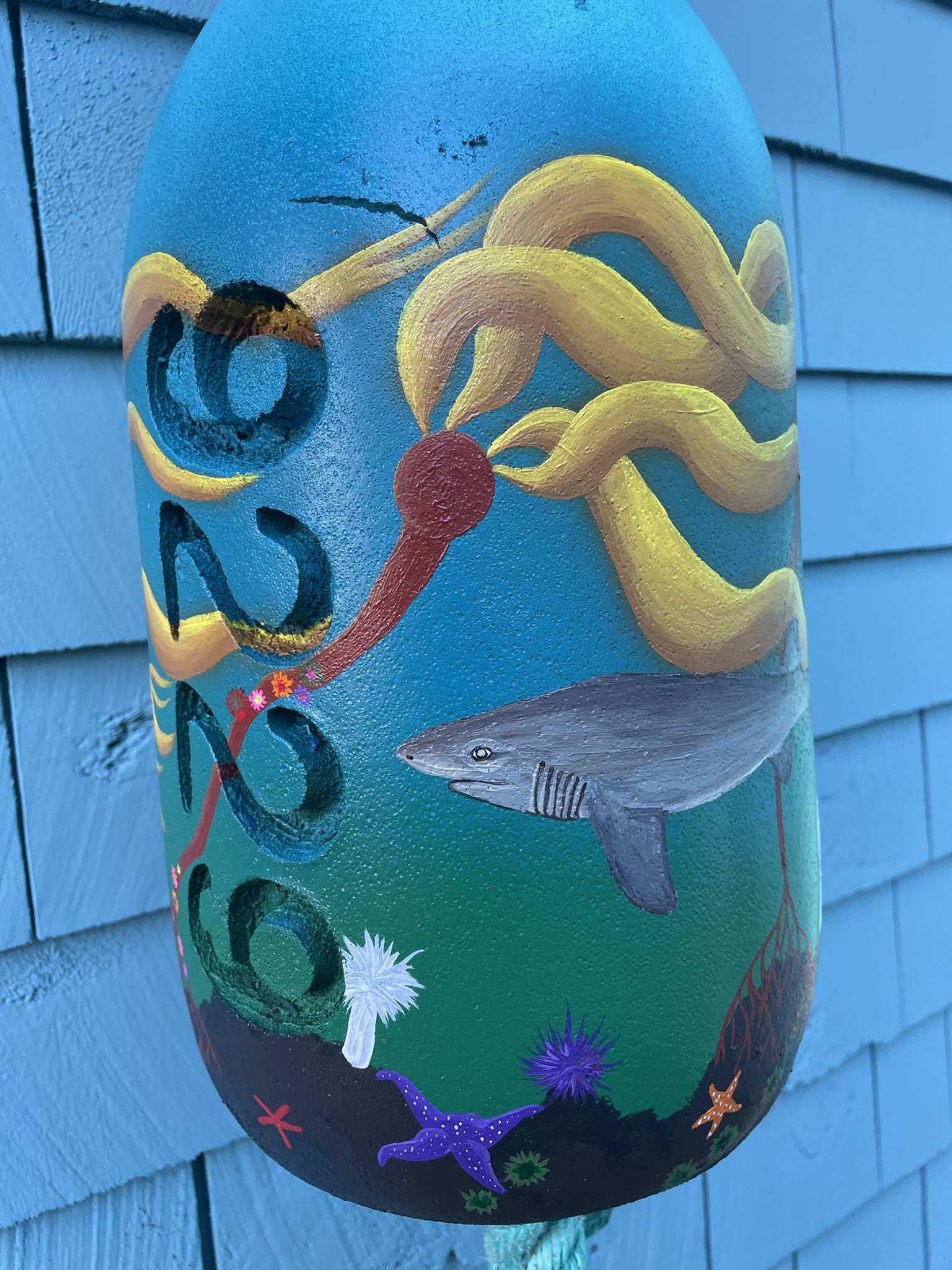
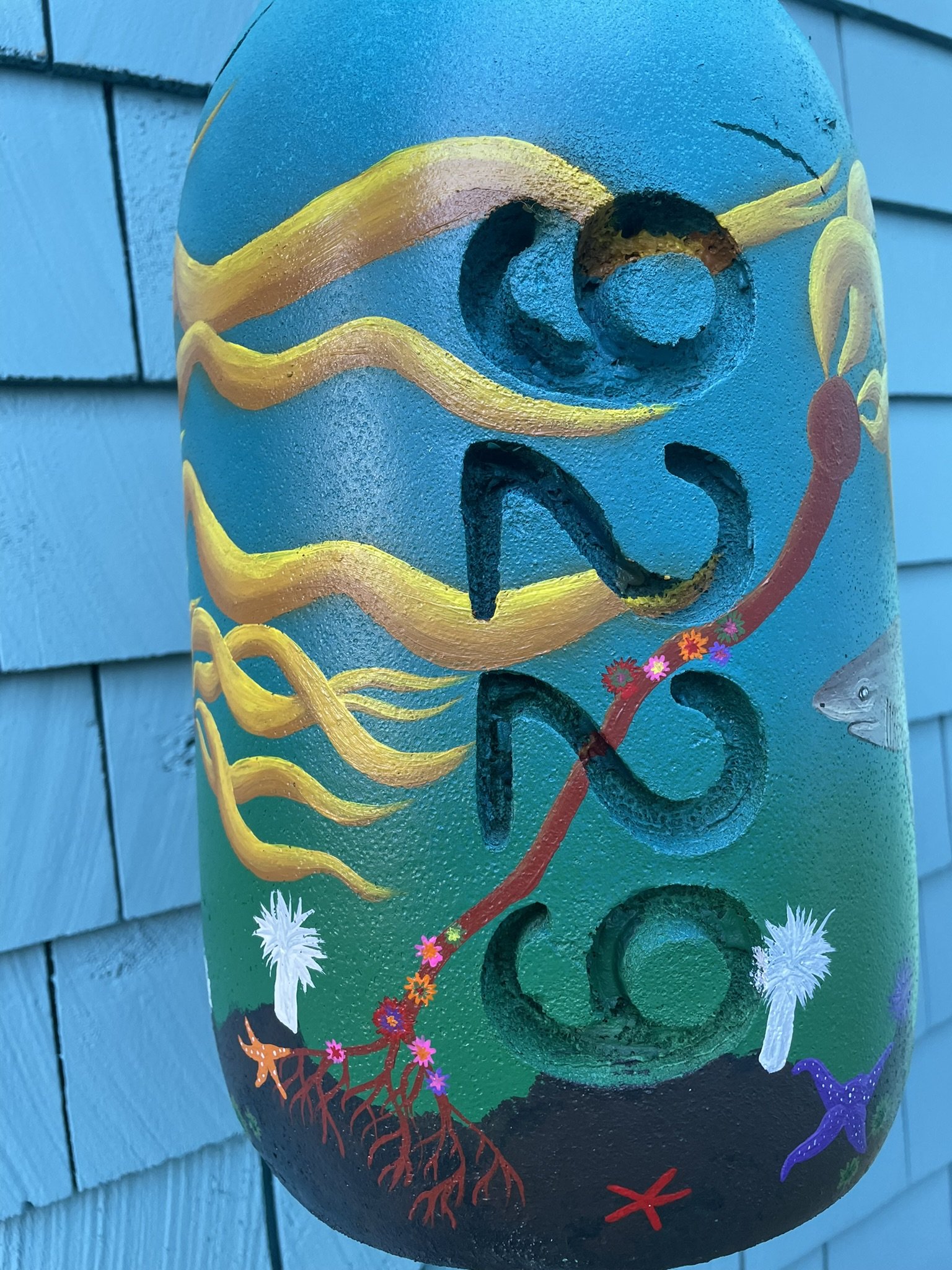
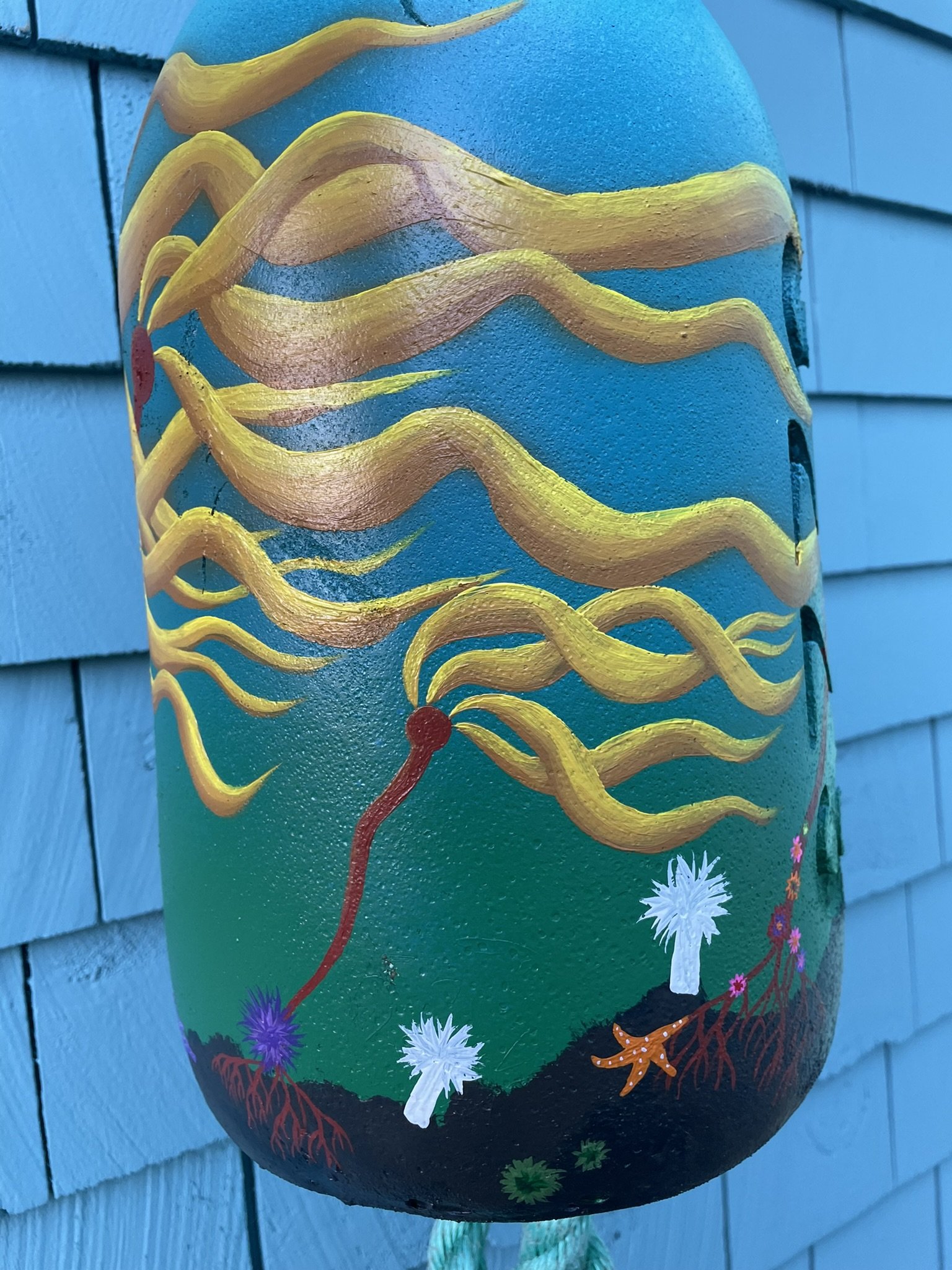
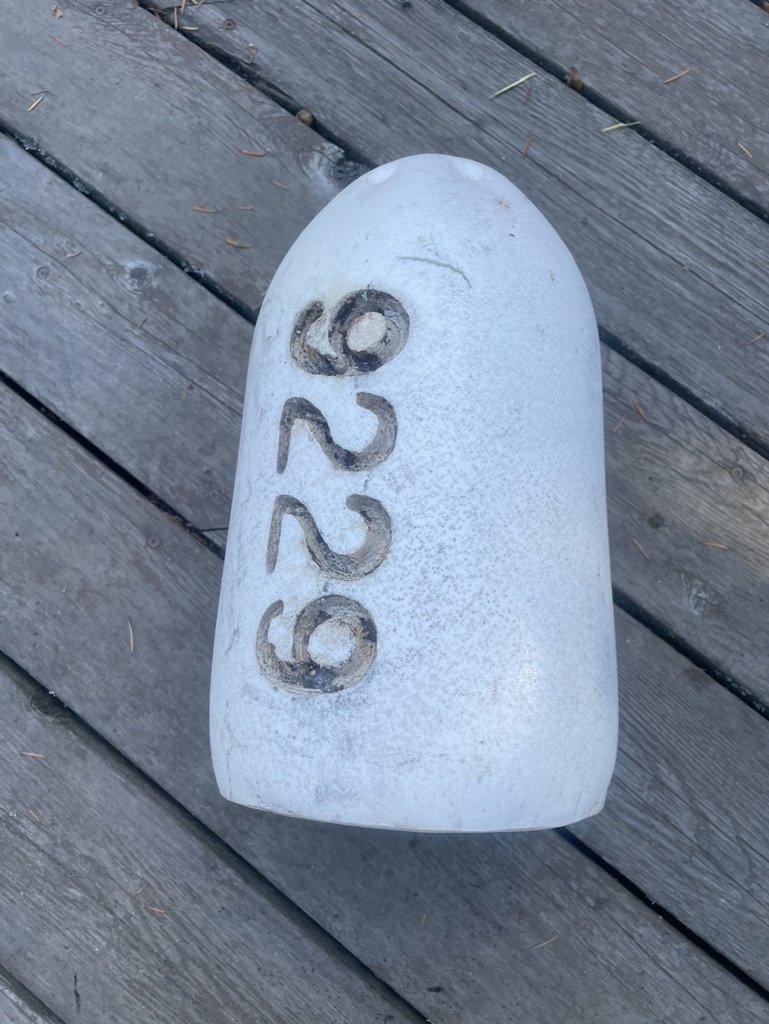


Blunt Nose Six-Gill Shark
*Available for purchase at God’s Pocket Resort, Hurst Island
96cm
This buoy was found by Ocean Adventures Charters on their beach clean-up initiative in the summer of 2021. It likely came from a crab fishery, either recreational or commercial to mark where the traps have been placed on the sea floor. It was found in the Normansell Islands near Aristazabal Island on the central coast of British Columbia, Canada. The recycled line it hangs from was found washed up near a salmon aquaculture site near Balaclava Island. I have spliced the end into a loop, tied it with a figure 8 knot and lashed the ends with waxed sailing twine.
This is a special piece inspired by one of the sharks that inhabits the waters off Vancouver Island, the blunt nose six-gill shark. Highly sought after by divers these sharks are difficult to find spending most of their time in waters as deep as 2,500 ft. They feed on fish such as hake, herring, mackeral and halibut as well as other sharks, rays, seals and sealions. In the spring females move onto the continental shelf to give birth to litters between 22-108 young which can be sired by multiples males. This species has been listed as a species of special concern by the Canadian federal government.
I’ve also painted several species of sea stars, brooding and proliferating anemones, orange social tunicates, green surf anemones, plumose anemones and purple sea urchins.
10% of the proceeds from this buoy will be donated to Cedar Coast Research Station. To learn more visit: https://www.cedarcoastfieldstation.org/